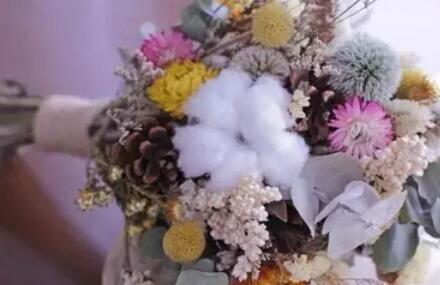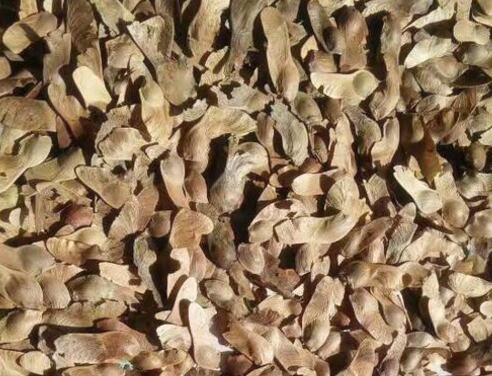How much is the seed price of Scutellaria barbata per jin? How to plant it? What are the effects and effects?
Half lotus is also known as: mountain whip, thin Scutellaria baicalensis, toothbrush grass, field grass, Scutellaria baicalensis, narrow leaf Korean grass. Commonly cultivated in Argentina, southern Brazil, Uruguay and Chinese mainland parks. So, how much is the seed price of Scutellaria barbata per jin? How to plant it? What are the effects and effects? It is understood that the seed price of Scutellaria barbata is 50 yuan per jin, and the price will be different in different regions.

How to plant Scutellaria barbata?
1. Soil preparation and fertilization: select good plots, apply rotten barnyard manure 2000 kg per 667m2, ploughing depth 15 cm, and ploughing with ploughing, 50 kg ammonium dihydrogen phosphate and urea per 667m2. Rake fine and flat, making a border 1.2m wide.
two。 Seedling raising and transplanting: in the whole border, sow the seeds according to 1215g / m2, soak the seeds in 60 ℃ water for 24 hours, fish them out and hang them slightly, mix them with fine sand (fine sieve) according to the ratio of 1: 100, and then spread them evenly into the border. Cover the grass grass or agricultural film, spray water once a day, keep it moist, and germinate and germinate in 15-20 days. After the seedling comes out, remove the mulch, spray water immediately, and then spray water once every 3-4 days. The seedlings were transplanted to the field when the seedling height was 5 cm, with a row spacing of 20 cm and 1 plant per hole.
3. Direct broadcast in the field: in order to germinate all the seeds of direct seeding, it is best to plant them in cloudy and rainy days. The time is from September to early October, strip broadcast or hole sowing. Strip sowing is ditched according to the row spacing of 25cm and 30cm, the ditch depth is about 4cm, and the hole spacing is about 30cm. When sowing, spread the seeds evenly in the ditch and cover with 0.5 cm thick loose fine soil fertilizer or plant ash. It can also be covered with agricultural film or grass to keep the soil moist. Remove the mulch from the whole seedling and do a good job in seedling management.
4. Intertillage weeding and topdressing fertilizer: after emergence, when the seedling height is 1cm or 2cm, the thin human feces and urine water is applied once combined with weeding, and 1000 kg is applied as seedling fertilizer every 667m2. When the height of the seedling is 4cm and 5cm, carry on the interseedling and replenish the seedling, and finally fix the seedling according to the plant spacing of 3cm, and make up the missing seedling at the same time. After the seedlings were fixed, the water of human feces and urine was applied once respectively. In the future, there should be no weeds in the field, and topdressing should be applied once after each harvest to promote the germination of new branches and leaves. After the last harvest in November, winter manure was applied again, 200 kg of rotten barnyard manure, 25 kg of cake fertilizer or calcium superphosphate per 667 square meters, and then ditched between rows after composting. After application, cover the soil and cultivate the soil to keep warm and prevent cold.
5. Irrigation and drainage: always keep the soil moist at the seedling stage and not lack of water. It should be irrigated in time in the dry season. In the rainy season and after each flood, ditch drainage should be carried out in time to prevent stagnant water from flooding roots and seedlings.
6. Harvest and processing: on a sunny day, cut from the stem base 2Mel 3 cm from the ground, leaving the stem base to facilitate the germination of new branches. Wash the sediment after cutting the whole grass and dry it in the sun. It can harvest 3 mi 4 times a year.
What are the effects and effects of Scutellaria barbata?
1. The whole herb of Scutellaria barbata is used in medicine, which has the functions of clearing heat and detoxification, promoting blood circulation and removing blood stasis, reducing swelling and pain, anti-cancer and so on. Cold taste sour, the whole grass contains a variety of vitamins, trace elements and amino acids and other ingredients. It has the effect of cooling blood and detoxification, dispelling blood stasis and relieving pain, detumescence and clearing heat and dampness.
two。 Scutellaria barbata has a height of up to 55 cm, dense clusters, colorful flowers and long florescence. It is an excellent flower match for decorating grasslands, slopes and roadsides. It is also suitable for planting on the edge of flower beds and flower borders. Potted plants are small and exquisite, and can be displayed in balconies, windowsills, corridors, doors, poolsides and courtyards.
Time: 2019-03-19 Click:
- Prev

How much is a bunch of cotton on the market? What are the planting prospects?
Cotton is a common crop in northern China, especially in the arid areas of northwest China, where less precipitation and high light intensity are very suitable for the growth of cotton. But have you ever seen watching cotton? Today, the editor will tell you how much a bunch of ornamental cotton is on the market.
- Next

How much does the seed cost per pound? How many years of planting can bear fruit? How much profit per mu? What are the main values?
Acer truncatum also known as Acer, Acer pentaphylla, color tree, Yuanbao tree, Liquidambar tree and so on. Its whole body is a treasure, named after the samara shape like ancient Chinese gold ingot ingot, which is a unique tree species in China. So, how much is the price of a catty of maple seeds? How many years of planting can bear fruit? How much profit per mu? What are the main values?
Related
- Fuxing push coffee new agricultural production and marketing class: lack of small-scale processing plants
- Jujube rice field leisure farm deep ploughing Yilan for five years to create a space for organic food and play
- Nongyu Farm-A trial of organic papaya for brave women with advanced technology
- Four points for attention in the prevention and control of diseases and insect pests of edible fungi
- How to add nutrient solution to Edible Fungi
- Is there any good way to control edible fungus mites?
- Open Inoculation Technology of Edible Fungi
- Is there any clever way to use fertilizer for edible fungus in winter?
- What agents are used to kill the pathogens of edible fungi in the mushroom shed?
- Rapid drying of Edible Fungi

